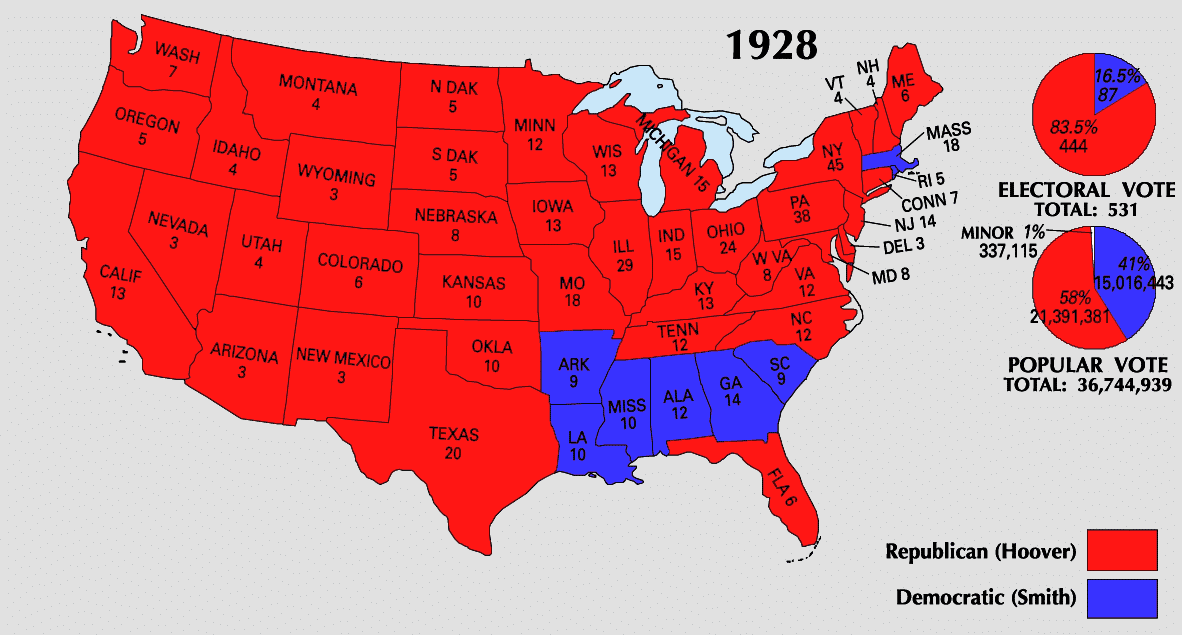The Presidential Election of 1928 took place at the height of the economy during the first half of the 20th century in the United States.

The Republicans had been led by Calvin Coolidge, who did not seek another term, and he had led the nation into a new era of economic prosperity and ingenuity. New inventions were being created, and new superstars were emerging, which included Baseball and Boxing athletes as well as those on the silver screen.
Only a few saw what lay ahead, but in the year 1928, the Republicans seemed like the obvious choice as President.
The Candidates were as follows:
- Republicans: Herbert Hoover and Vice President Charles Curtis
- Democrats: Al Smith and Joseph T. Robinson
Platforms
Republicans: The Republicans ran on their record. Herbert Hoover would deliver a speech claiming that America was on the verge of ending all poverty. The economy was booming, and American spirits were at an all-time high. The Republicans did not need to do much to speak about various issues.
Democrats: Most Democrats did not want to participate in this election cycle as it was clear they would not win. Al Smith was selected on the first ballot for the party, but with the memory of the Teapot Dome Scandal fading, there were few arguments the Democrats could make to influence the election.
Pushback and enforcement of the Volstead Act were beginning to take place.
Outcome
Hoover won the election by a wide margin on pledges to continue the economic boom of the Coolidge years. He received more votes than any candidate of the Republican Party previously had in every state except five Rhode Island, Iowa, North Dakota, South Carolina, and Tennessee.
The Hoover vote was greater than the Coolidge vote in 2,932 counties; it was less in 143 of the comparable counties.
The 21,400,000 votes cast for Hoover also touched the high-water mark for all votes for a presidential candidate up to that time and were an increase of more than 5,500,000 over the Coolidge vote four years earlier.
The Republicans were dominant, but this would be the final Presidential election they would win for 20 years.
